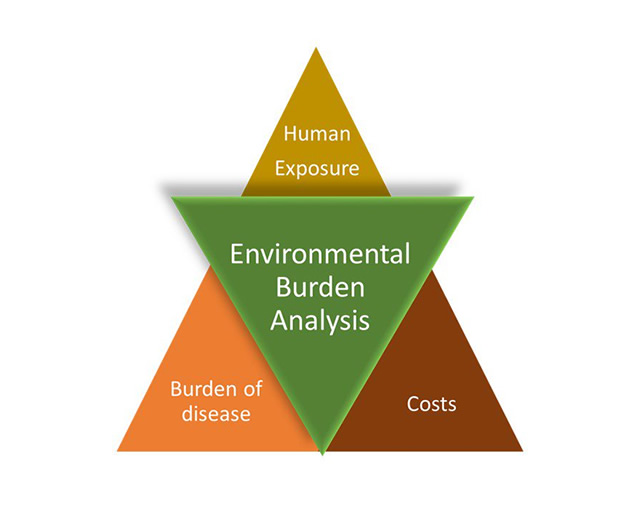
Environmental Burden of Disease Analysis [NI-SERV-2020-37]
Burden of disease, with an economical evaluation, related with exposure to environmental contaminants (air pollutants,chemical contaminants)
Service/Expertise Overview
This environmental burden of disease analysis considers a tiered approach, with sequential steps. Considering a certain air pollutant and/or chemical contaminant, the first step consists of determining the human exposure using data available in air monitoring platforms, scientific articles or other databases. The second step includes the definition of the health endpoint to be considered in the assessment, the selection of exposure-response factors and definition of the disease model, as well as the use of deterministic or probabilistic analysis. After gathering all these data, the calculation of burden of disease and the economic evaluation are the next steps. In these further analyses, the first approach considers the definition of metrics to express the results (e.g. DALYs, QALYs, VSL). Lastly, an integrative approach will gather the results provided and perform an evidence-based analysis for a more cost-effective public health and environmental intervention.
This comprehensive assessment including the health and economic impact domains contributes with extensive knowledge to support policymakers for the most cost-effective public health measures to be implemented in what regards the exposure of population to air pollutants and/or chemical contaminants and the onset of disease. The choices made by policy makers, companies and citizens over the coming decade will determine when and how Europe will achieve its ambitions, namely the zero-pollution ambition. This framework provides the needed supporting information to act for reducing air pollution by delivering actionable knowledge on air pollution trends, related health effects and estimated costs. With this, it is also possible to assess progress resulted from policy actions allowing identifying the best options and the ones that need to be taken.
Competitive advantages
A comprehensive analysis where the health and economic impact are considered requires a multidisciplinary team to fulfil all the required domains. Until now, several studies are available for the Portuguese population but do not consider all these aspects. This framework is indeed innovative in Portugal and contributes to the establishment of new preventive measures but also to the assess the progress of implementation of the measures already in place.
Applications The results obtained through an environmental burden of disease analysis, with the inclusion of these dimensions, provide policymakers with evidence-based data allowing to assess the costs and benefits of policy measures (e.g. legislation to reduced levels of air pollution, prohibition of use of certain chemical), not only from the perspective of progress after implementation but also the costs of non-implementation.
Further details
Martins C, Vidal A, De Boevre M, De Saeger S, Nunes C, Torres D, Goios A, Lopes C, Alvito P, Assunção R, (2020) Burden of disease associated with dietary exposure to carcinogenic aflatoxins in Portugal using human biomonitoring approach. Food Research International. 134:109210. DOI: 10.1016/j.foodres.2020.109210.
Ougier E, Fiore K, Rousselle C, Assunção R, Martins C, Buekers J (2021) Burden of osteoporosis and costs associated with human biomonitored cadmium exposure in three European countries: France, Spain and Belgium. International Journal of Hygiene and Environmental Health, 234, 113747. DOI: 10.1016/j.ijheh.2021.113747.
Assunção R, Martins C, Viegas S, Viegas C, Jakobsen LS, Pires S, Alvito P (2018) Climate change and the health impact of aflatoxins exposure in Portugal–an overview. Food Addit Contam – Part A Chem Anal Control Expo Risk Assess, 35(8):1610–21. DOI: 10.1080/19440049.2018.1447691


